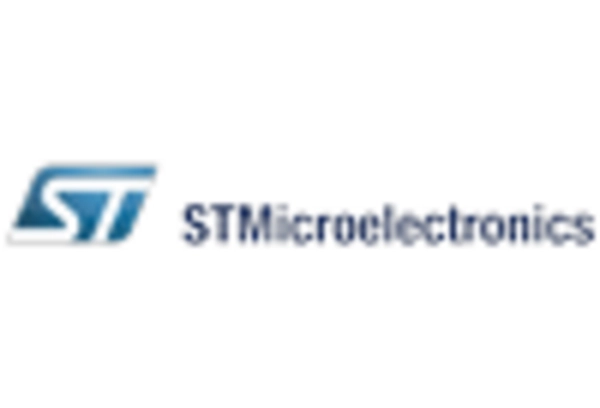Expansion of 5G Infrastructure
The ongoing expansion of 5G infrastructure is a pivotal driver for the gan semiconductor-devices market. As telecommunications companies invest heavily in 5G networks, the demand for high-frequency, high-efficiency components is escalating. Gan devices are particularly suited for 5G applications due to their ability to operate at higher frequencies with lower power losses. This capability is essential for the development of advanced base stations and network equipment. The US market alone is expected to see investments exceeding $100 billion in 5G infrastructure by 2026, which will likely propel the adoption of gan semiconductor devices. Consequently, this trend indicates a robust growth trajectory for the gan semiconductor-devices market as it aligns with the technological advancements in communication.
Emergence of Smart Grid Technologies
The emergence of smart grid technologies is significantly influencing the gan semiconductor-devices market. As the US transitions towards more intelligent energy management systems, the demand for efficient power electronics is increasing. Gan devices are integral to smart grid applications due to their ability to handle high voltages and currents while maintaining efficiency. This capability is crucial for integrating renewable energy sources and improving grid reliability. The US government has committed to investing in smart grid initiatives, with funding projected to reach $20 billion by 2027. This investment is likely to enhance the adoption of gan semiconductor devices, positioning them as essential components in the evolving energy landscape. Thus, the growth of smart grid technologies is expected to bolster the gan semiconductor-devices market.
Surge in Power Efficiency Requirements
The gan semiconductor-devices market is experiencing a notable surge in demand driven by the increasing need for power efficiency across various sectors. Industries such as automotive, telecommunications, and consumer electronics are prioritizing energy-efficient solutions to reduce operational costs and meet regulatory standards. For instance, the energy efficiency of gan devices can reach up to 90%, significantly outperforming traditional silicon-based alternatives. This efficiency not only lowers energy consumption but also enhances the performance of devices, making them more appealing to manufacturers. As a result, the market is projected to grow at a CAGR of approximately 20% over the next five years, reflecting the critical role of power efficiency in shaping the future of the gan semiconductor-devices market.
Increased Adoption in Aerospace and Defense
The gan semiconductor-devices market is witnessing increased adoption within the aerospace and defense sectors, where high-performance and reliability are paramount. The unique properties of gan devices, such as their ability to withstand extreme conditions and deliver superior thermal performance, make them ideal for applications in radar, satellite communications, and military electronics. The US defense budget has allocated substantial funds for modernization efforts, with an emphasis on advanced technologies. This focus is likely to drive the demand for gan semiconductor devices, as they offer enhanced performance and efficiency compared to traditional materials. As a result, the aerospace and defense sectors are expected to contribute significantly to the growth of the gan semiconductor-devices market in the coming years.
Rising Demand for High-Performance Computing
The gan semiconductor-devices market is being propelled by the rising demand for high-performance computing (HPC) solutions. As industries such as data centers, artificial intelligence, and machine learning expand, the need for efficient and powerful semiconductor devices becomes critical. Gan devices offer superior performance characteristics, including faster switching speeds and lower thermal resistance, which are essential for HPC applications. The US data center market is projected to grow to $100 billion by 2026, further driving the need for advanced semiconductor technologies. This trend suggests that the gan semiconductor-devices market will likely benefit from the increasing reliance on HPC, as organizations seek to enhance their computational capabilities while managing energy consumption.















Leave a Comment